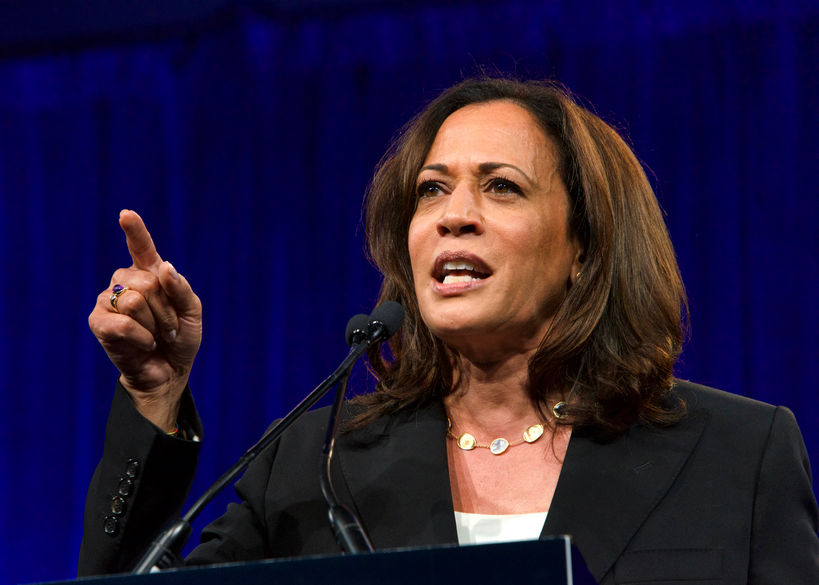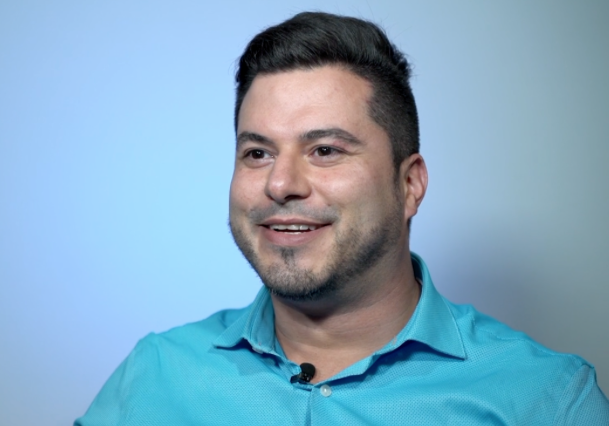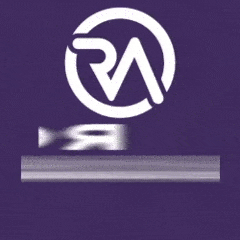Business Lending
Clearco to Invest €100 Million into Digital-First Irish Businesses
April 6, 2022 Clearco, the world’s self-proclaimed largest e-commerce investor that provides revenue-based financing capital solutions to e-commerce businesses, is making yet another move. Directed by CEO Michele Romanow, a star in the hit TV show “Dragon’s Den,” Clearco recently announced that it will be introducing its product to Irish founders and entrepreneurs. Upon continuation to support the 15+ % growth predicted in the Irish economy in 2022, the company plans to put €100 million into digital-first Irish businesses.
Clearco, the world’s self-proclaimed largest e-commerce investor that provides revenue-based financing capital solutions to e-commerce businesses, is making yet another move. Directed by CEO Michele Romanow, a star in the hit TV show “Dragon’s Den,” Clearco recently announced that it will be introducing its product to Irish founders and entrepreneurs. Upon continuation to support the 15+ % growth predicted in the Irish economy in 2022, the company plans to put €100 million into digital-first Irish businesses.
An international sales and business development hub has been developed in Dublin. The Clearco team currently consists of 75 members with a plan of adding 125 employees in the future. This will support Clearco’s plan to grow in Europe, North America and Asia Pacific in 2022.
This year Clearco plans to expand its products and services within current European operations and into new key markets across the continent. This includes Western Europe, Central Europe and the Nordic region.
 Clearco has invested over $3.2 billion globally into 7,000+ businesses across three continents. Ireland is the fourth international market for Clearco. To be able to serve as many founders as possible internationally, the creation and development of its sales and development team is key.
Clearco has invested over $3.2 billion globally into 7,000+ businesses across three continents. Ireland is the fourth international market for Clearco. To be able to serve as many founders as possible internationally, the creation and development of its sales and development team is key.
Romanow stated “Clearco is excited to bring our revenue-based funding model to Irish founders. Ireland has one of Europe’s strongest economies and a dynamic start-up sector. We are confident that we will have a meaningful impact on the Irish e-commerce economy. Clearco is excited to establish this International Sales hub in Ireland to support our growth in the EMEA region. We’re impressed by the talent and tech skills here and I look forward to building the team to serve our growing customer base.”
Businesses in all 50 states have been funded by Clearco within the US market. However, over half of the company’s funding goes to businesses outside of California, New York, Illinois and Massachusetts, which received about 70%. Clearco believes the same trends will be seen in the Irish marketplace as they hope to help fund traditionally underserved communities.
Relying on Google Maps to Verify a Merchant’s Business? Be Careful
April 5, 2022 If a Google Maps listing inspired confidence in a small business loan applicant’s existence, then you may not know just how many people try to create fake profiles. In 2018, for example, Google acknowledged that it had removed more than 3 million fake business listings from its platform while simultaneously disabling 150,000 accounts that created them. At the time, industry experts told the Wall Street Journal that Google’s efforts were hardly making a dent, estimating that on any given business day, 11 million businesses listed on Google Maps were fake.
If a Google Maps listing inspired confidence in a small business loan applicant’s existence, then you may not know just how many people try to create fake profiles. In 2018, for example, Google acknowledged that it had removed more than 3 million fake business listings from its platform while simultaneously disabling 150,000 accounts that created them. At the time, industry experts told the Wall Street Journal that Google’s efforts were hardly making a dent, estimating that on any given business day, 11 million businesses listed on Google Maps were fake.
Some fake business types are more common than others. Sources told the WSJ that contractors, electricians, towing and car repair services, movers, and lawyers ranked among those most used in a scheme.
Since then, efforts to trick Google have become even more prolific. Google revealed that more than 7 million fake business profiles were removed in 2021, more than double that of three years earlier. The company also caught schemers in the act of trying to create new fake business listing more than 12 million times in 2021.
These results should be alarming for a small business lender that is unable to conduct an on-site visit or mobile site inspection with an applicant. For smaller sized applications, a cursory check on Google Maps or Google Street View to scope out the business location may be the only visual analysis that an underwriter conducts. Mismatches on Street View can be explained away by claiming that the Google car hadn’t come by recently to refresh the pictures or that the signs on the building hadn’t been changed or gone up yet, but the listing itself on Google Maps might imply that the business must be there, even if the Google car hadn’t come by lately. Obviously, as the data shows, that’s not perfectly reliable.
Online reviews, meanwhile, have already been the subject of skepticism for years, with there being allegations of companies manipulating reviews. Savvy searchers might read such attestations and conclude that a company’s positive testimonials are fake and perhaps the products or services being offered are not as good as they’re being artificially acclaimed to be. Google said that it removed 95 million “policy-violating reviews” in 2021. That’s on top of blocking 190 million photos and 5 million videos.
 “Every day we receive around 20 million contributions from people using Maps,” Google said in its announcement “Those contributions include everything from updated business hours and phone numbers to photos and reviews. As with any platform that accepts contributed content, we have to stay vigilant in our efforts to fight abuse and make sure this information is accurate.”
“Every day we receive around 20 million contributions from people using Maps,” Google said in its announcement “Those contributions include everything from updated business hours and phone numbers to photos and reviews. As with any platform that accepts contributed content, we have to stay vigilant in our efforts to fight abuse and make sure this information is accurate.”
Despite the immense number of fraudulent listings, Google touts that it amounts to less than 1% of all the total listings on Google Maps. That’s perhaps reassuring news to anyone that relied on the data in the past to make a crucial decision. The danger, however, is that schemers are trying to create more fakes, not less, and it may only take a handful of applications to slip through the cracks of underwriting to realize one can never get too comfortable with an external data point.
A restaurant with twenty identically worded reviews about how good the soup is, for example, might trigger one’s skepticism radar about it actually being all that good. “Ah, ha,” you might say, “they’re trying to cover up the fact that something is wrong with their soup!” And that’s where they’ve got you, because while you’re busy playing soup detective, you’re completely missing the real con. There isn’t even any soup at all, the restaurant itself doesn’t even exist.
Women Discuss Strategies to Grow Their Businesses
March 30, 2022 The U.S. Small Business Administration (SBA) held its 2022 Women’s Business Summit this week. The summit was a two-day event that consisted of virtual panels, workshops and fireside chats. The event was held in co-sponsorship with the Nasdaq Entrepreneurial Center.
The U.S. Small Business Administration (SBA) held its 2022 Women’s Business Summit this week. The summit was a two-day event that consisted of virtual panels, workshops and fireside chats. The event was held in co-sponsorship with the Nasdaq Entrepreneurial Center.
Remarks were made by United States Vice President Kamala Harris, along with other notable panelists. Harris stated, “Women small business owners power the economy of our nation.”
“Women small business owners face many unique challenges, many lack access to paid leave, affordable child care and the capital to grow,” Harris made clear.
Harris noted, “Through SBA we have opened women business centers in every state of our country, 141 in total.” These centers connect women business owners with the tools and resources to succeed. Kamala later declared that the fight to pass legislation for women for affordable child care and paid leave will continue.
During the Innovation and Investment panel, Marianne Markowitz, CEO of First Women’s Bank, discussed how there is a gender gap in the lending market.
“We launched last year as the only women-founded, women-owned bank in the country that’s focused on closing the gender lending gap at a national level,” said Markowitz.
 Women only receive 2% of all the investments in America. Markowitz discussed that women are being introduced to the wrong loans and capital. Many women are relying on personal credit and sometimes lean on equity at the wrong stage of their business. Markowitz provides women with the proper education to make the right choice, fully understand and be prepared for when they apply for loans.
Women only receive 2% of all the investments in America. Markowitz discussed that women are being introduced to the wrong loans and capital. Many women are relying on personal credit and sometimes lean on equity at the wrong stage of their business. Markowitz provides women with the proper education to make the right choice, fully understand and be prepared for when they apply for loans.
Mekaelia Davis, Director of Inclusive Economies, Surdna Foundation, explained how the consolidation of the banking industry has removed a great amount of financial institutions. This has had a negative impact on relationships with financial partners, leading to more predatory actions online taking the place of financial institutions.
“New York City Small Business Founder Collective estimated there is nearly annually $45 billion of unmet capital, most demand coming from Bronx, Eastern Brooklyn, Queens,” according to Davis.
Susan Au Allen, CEO and National President of the U.S. Pan Asian American Chamber of Commerce explained that even if women are educated they are not aware of all of the services that the SBA offers.
“For the Asian American community and the women community it is a structural problem, a systemic structural obstacle that we have faced,” Allen asserted.
The Associate Administrator of SBA’s Office of Investment and Innovation, Bailey DeVries, described what they have done for small business, “We have provided over $100 billion worth of small business through the SBIC program and currently manage over $34 billion worth of assets through those partnerships.”
The summit provided women with an opportunity to become further educated on how to succeed in their small businesses.
Update on Connecticut Commercial Financing Disclosure Bill
March 28, 2022The Connecticut commercial financing disclosure bill first reported by deBanked on March 3rd is still in play. SB272, written similarly to the first draft of the recently passed New York legislation, has been met with both support and opposition.
Supportive
- Connecticut Bankers Association (but with amendments)
- Responsible Business Lending Coalition
- Innovative Lending Platform Association
Opposed
- Electronic Transactions Association
- Revenue Based Finance Coalition
- Small Business Finance Association
IOU Financial Originated $161.5M in Loans in 2021
March 22, 2022 IOU Financial is coming off of its biggest year ever. The company has revealed total loan originations of $161.5M for 2021, up nearly 100% year-over-year. The figure puts it ahead of rival Funding Circle USA in 2021, according to origination data compiled by deBanked.
IOU Financial is coming off of its biggest year ever. The company has revealed total loan originations of $161.5M for 2021, up nearly 100% year-over-year. The figure puts it ahead of rival Funding Circle USA in 2021, according to origination data compiled by deBanked.
In a public statement, IOU President and CEO Robert Gloer said, “The success of IOU’s marketplace strategy announced in 2021 is allowing us to scale up faster than previously possible. We’re proud of the team for breaking new origination records and giving us the extra latitude to further reduce corporate debt.” The latter comment was in reference to the company’s intention to repurchase approximately $1.2 million of its convertible debentures at par.
IOU’s full year 2021 financials are expected to be released next month.
Irish Lending is Making a Comeback Despite ILCU’s Request for Less Regulation
March 22, 2022 In what some have called the financial services capital of Europe, Ireland’s financial sector has been making a serious comeback since its pandemic-induced slumps. Despite a recent release from the Central Bank of Ireland (CBI) saying that small business lending was making a serious comeback, credit unions throughout the country are pleading with regulators to remove “handcuffs” and allow them to fund their local merchants.
In what some have called the financial services capital of Europe, Ireland’s financial sector has been making a serious comeback since its pandemic-induced slumps. Despite a recent release from the Central Bank of Ireland (CBI) saying that small business lending was making a serious comeback, credit unions throughout the country are pleading with regulators to remove “handcuffs” and allow them to fund their local merchants.
Current regulations enforced by the CBI limit both mortgage and small business lending to banks at 7.5% of the credit union’s total assets.
The Irish League of Credit Unions (ILCU) has said that credit unions are prevented from expanding into the mortgage market because of restrictive lending limits. While the effort comes across as a desire for credit unions to have more flexibility in mortgage options, small business lending has been tied into the deal and thus a part of the movement to get these regulations lifted.
According to the CBI’s data, net lending to small business owners in Ireland was €91m in the fourth quarter, reversing consecutive decreases from the previous two quarters. Estimated repayments by Irish SMEs were the lowest on record over the year as well, to the tune of €4.2 b.
As the data portrays, Irish lending is chugging its way back to normalcy. While the CBI appears to believe that the current system in place is working just fine, the credit unions are making a case that they can help speed up the Irish economy’s recovery process by being able to get a slice of the lending pie.
The ILCU recently responded to remarks made by minister of State Sean Fleming, who when speaking on credit union involvement in lending, encouraged their participation. “Credit unions should fill the gap left by the departures of Ulster Bank and KBC from the Irish market and start lending more mortgages.”
Fleming also included a claim that credit unions are “not doing enough of lending” in his remarks.
In response, ILCU deputy chief executive David Malone cited these regulations that the group has been fighting against as the cause for Fleming’s accusation.
“In order for credit unions to become community banks, and to really engage in the mortgage market, the ILCU is asking Minister Fleming to address the imbalance caused by the restrictive regulatory lending regime in his soon-to-be-published review of the policy framework within which credit unions operate,” said Malone.
Ireland has notably made some big moves in regards to supporting, financing, and government investing of fintech companies from both Ireland and abroad. As the country continues to come out of the financial hardships of the pandemic while also working in the contemporary European financial ecosystem, the CBI doesn’t appear to be lifting any regulation anytime soon, as long as lending numbers keep creeping back to normal.
Reality TV Loan Broker Shares What Happened After the Show
March 17, 2022 Juan Carlos Marcano’s experience on Equipping the Dream has given his loan brokering career a major jumpstart.
Juan Carlos Marcano’s experience on Equipping the Dream has given his loan brokering career a major jumpstart.In a chat with Juan Carlos Marcano this week, the Equipping The Dream broker who became a fan favorite for his personality and demeanor, it was learned that he’s been up to some interesting stuff since he appeared in deBanked’s first reality show. While operating JFK Business Financing in Dallas, Texas, Marcano shared that he is still in cahoots with some of the other participants in the show.
“I closed five deals last week,” said Marcano, when asked about what happened after he left the training office of Everlasting Capital. “After filming the show, I started with Will and Josh,” he said in reference to the two partners of Everlasting Capital. “They sent me leads, and I started closing.”
When asked what the Spanish speaking merchant needs most out of the small business financing industry, and more so Spanish speaking brokers like him, Marcano spoke about how these merchants just need service above all else. He spoke about how because of the language barrier, many of these merchants don’t have access to the same type of capital as an english-speaking business because there are not many people out there to go ask for it in their language.
 Marcano awaited the final results of the one-week training competition at Everlasting Capital while wearing the flag of Venezuela as a cape, his native country.
Marcano awaited the final results of the one-week training competition at Everlasting Capital while wearing the flag of Venezuela as a cape, his native country.When asked if he is working exclusively with the brokerage from the show or if has future plans to expand his business, Juan spoke like a true broker. “I’m open to hearing from other funders and brokers about doing more deals,” he said.
“I will use the leads I get from [Everlasting] to help build my business in that industry,” said Marcano. “I’m starting to get better and better. When I get my cash flow going on and up, I’m setting a plan with a strategy to build my own details. I just need to get better with my website, social media, everything here is marketing.”
He said one major advantage of being a small shop is the potential he has as a broker in where he can live and do business. Currently a Dallas resident, Marcano sees a future in multiple cities. “I want to open up businesses in Miami,” he said, “but as I think about it, I’d like to open up a business in New York too.”
When asked about how he will compete with big tech’s emergence into small business lending, Marcano highlighted customer service and personality are the key to success for companies like his.
“For me, it’s all about providing great service. It’s all about five star service.”
You can meet Marcano at deBanked Connect Miami on March 24, where he alongside the cast of Equipping the Dream will be in attendance.
Meet The Aspiring Brokers Who Competed on Camera
March 10, 2022
The full cast of Equipping The Dream, the first b2b sales reality show, will reunite at deBanked CONNECT Miami on March 24th.
RJ Rochelle, Juan Carlos Marcano, Thomas Long, and Angela Thompson (above in order), all participated in a week long sales training last November that was captured on camera. They competed for a grand prize that was won in the season finale that aired just recently on March 3rd. Equipping The Dream is the defining b2b sales reality show. Now you can meet the brokers and the trainers that helped them in person!
Only a limited number of tickets to deBanked CONNECT Miami are left and sponsorships have already sold out. This will be deBanked’s 4th event in Miami since 2018.
All six episodes of Equipping the Dream are available on deBanked TV FREE.





























